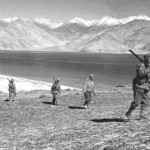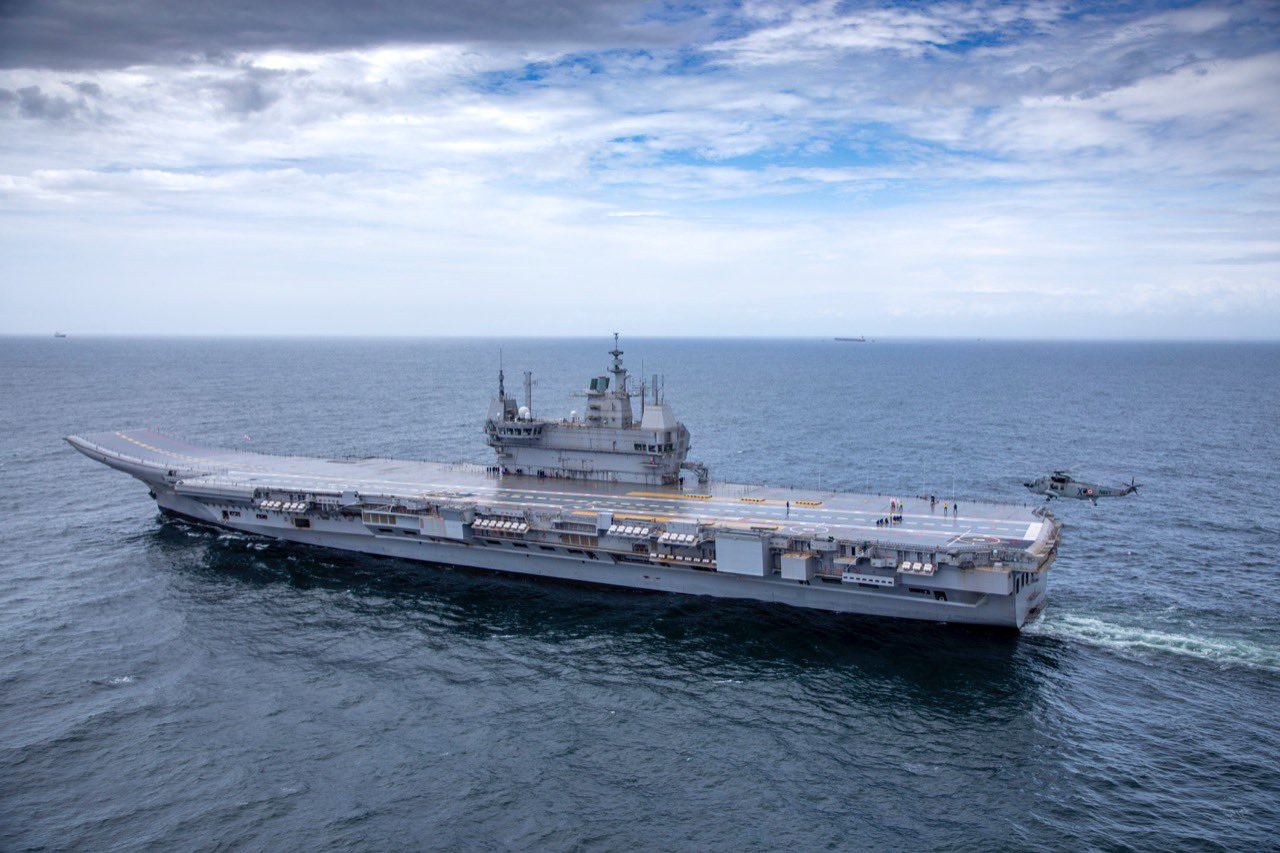
Often, a newborn is given the name of a parent, or a grandparent or a great-grandparent, and so on. In India, a number of kings have been named Vikramaditya. In the western cultures similar traditions prevail. It is not uncommon to see names perpetuated through generations.The reason for such practice in all cultures is the same. In assigning names repetitively, it is hoped that certain endearing qualities associated with an ancestor would carry through to individuals assigned the same name in some subsequent generation! This practice is also seen among armed forces, the worldover, especially in the navies. For instance, in the United Kingdom, successive ships have been named HMS Ark Royal. In the United States of America, the names Enterprise and Columbia have often been given to successive ships, and even to space-crafts.
In India, the Soviet Union-built submarines, INS Kalvari, INS Khanderi, and INS Karanj were commissioned into the Indian Navy during the period between 1967 and 1969. These were decommissioned over the period from 1996 to 2003. These names have now been assigned to three newer submarines, built in India with French collaboration, currently in service. Similarly, Soviet Union-built submarines, INS Vela, INS Vagir, and INS Vagsheer, commissioned during 1973-1974, were decommissioned over the period from 1997 to 2010. These names, too, have been assigned to three subsequent submarines,either already built or being built in India with French collaboration. There are other such examples. A recent example is that of an Indian-made aircraft carrier, INS Vikrant.
An earlier, British-made Majestic-class aircraft carrier, INS Vikrant, with pennant number of R11, had played a key role in enforcing the naval blockade of erstwhile East Pakistan during the Indo-Pakistani War of 1971.At that time, INS Vikrant (R11) was the only aircraft carrier existing in the Eastern Hemisphere. The remarkable leaders, who commanded this carrier and contributed to the traditions of the Indian Navy, are as follows.
| Commanding Officers | Assumed command on | Left command on |
| Captain PS Mahindroo | 16 February 1961 | 16 April 1963 |
| Captain Nilakanta Krishnan, DSC | 17 April 1963 | 16 November 1964 |
| Captain VA Kamath | 16 November 1964 | 4 November 1966 |
| Captain Jal Cursetji | 4 November 1966 | 8 December 1967 |
| Captain EC Kuruvila | 8 December 1967 | 5 December 1969 |
| Captain Kirpal Singh | 5 December 1969 | 15 January 1971 |
| Captain SL Sethi NM | 15 January 1971 | 30 June 1071 |
| Captain Swaraj Parkash, MVC, AVSM | 1 July 1971 | 24 January 1973 |
| Captain MK Roy, AVSM | 3 January 1974 | 8 February 1976 |
| Captain RH Tahiliani, AVSM | 8 February 1976 | 26 December 1977 |
| Captain JC Puri, VrC, VSM | 26 December 1977 | 5 March 1979 |
| Captain RD Dhir, VrC | 5 March 1979 | 15 June 1979 |
| Captain S Bose | 15 June 1979 | 2 April 1981 |
| Captain A Ghosh | 2 April 1981 | 27 August 1982 |
| Captain KASZ Raju, NM | 27 August 1982 | 19 November 1984 |
| Captain SK ‘Gigi’ Gupta, MVC, NM | 19 November 1984 | 17 March 1986 |
| Captain PA Debrass, AVSM, NM | 17 March 1986 | 8 August 1988 |
| Captain BS Karpe | 11 October 1988 | 22 October 1989 |
| Captain RN Ganesh, AVSM, NM | 22 October 1989 | 3 January 1991 |
| Captain Raman Puri, VSM | 3 January 1991 | 25 June 1992 |
| Captain RC Kochchar, VSM | 25 June 1992 | 7 September 1994 |
| Captain K Mohanan | 7 September 1994 | 7 August 1995 |
| Commander HS Rawat | 20 July 1996 | 31 January 1997 |
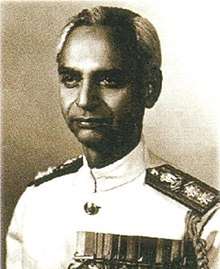
Vice Admiral Swaraj Parkash, PVSM, MVC,
AVSM
During the 1971 Indo-Pak War, INS Vikrant (R11) was commanded by Captain Swaraj Parkash. On board, the carrier had three air squadrons: INAS 300 ‘White Tigers’ with 16 Seahawks, commanded by Lieutenant Commander Santosh Kumar ‘Gigi’ Gupta; INAS 310 ‘Cobras’ with 5 Alizes, commanded by Lieutenant Commander Ravindra Das ‘Ravi’ Dhir; and INAS 321 ‘Angels’ with Alouette helicopters, commanded by Lieutenant Commander V Ravindranath. Commander Benoy Roy Chowdhury was Cdr E, the Engineering Officer of INS Vikrant (R11), responsible for the boilers generating the steam that was essential for the operation of the carrier.
The personnel of the Indian Navy have an outstanding record of making effective use of the equipment and materiel available to them, often enduring grave risks in performance of their duties. It is unfortunate that while the media, both within and outside the Naval organization, has noted in detail the use of assets and equipment, it has given little notice to the bravery and gallantry of the personnel of our armed forces. Throughout the 1971 Indo-Pak War, INS Vikrant (R11) operated in highly dangerous waters. It was the principal target for enemy submarines and aircrafts. Thoroughly vigilant, Captain Swaraj Parkash slept poorly, kept the ship safe, maintained ceaseless offensive operation of its aircrafts,and denied the enemy the use of the sea and inland waters.
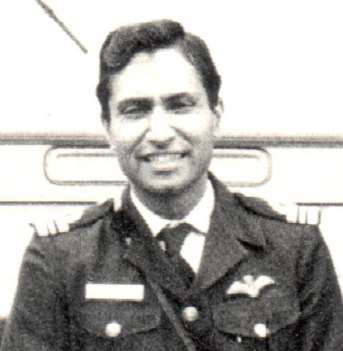
Rear Admiral Santosh K ‘Gigi’ Gupta, MVC,
NM
Lieutenant Commander Santosh Kumar ‘Gigi’ Gupta, as the Commanding Officer of INAS 300 White Tigers, led a total of eleven highly successful missions with devastating effects on enemy ships and heavily defended shore facilities of East Pakistan, in spite of heavy anti-aircraft barrage. When his Seahawkaircraft was hit by anti-aircraft gunfire, he did not deviate from his strike-mission, but also brought his damaged aircraft safely back to the carrier. Although the primary function of INAS 310 Cobra was anti-submarine surveillance, surface surveillance, air-to-ground observation and guidance, electronic intelligence, and maritime situation control including blockade of the Bay of Bengal, the Squadron’s Alizeaircrafts also engaged in day-time and night-time bombing of enemy airports and harbours. As the Commanding Officer of INAS 310, Lieutenant Commander Ravindra Das Dhir carried out strikes on enemy held ports in East Pakistan under heavy anti-aircraft gunfire by the ships in harbor. He inflicted heavy damage to harbour installations and ships, and sunk and immobilized enemy naval assets. Lieutenant Commander V. Ravindranath,as the Commanding Officer of INAS 321 Angels provided the security of rescue and retrieval, should the pilots be shot down, crash or have to ditch into the sea. However, no aircraft or personnel were lost.
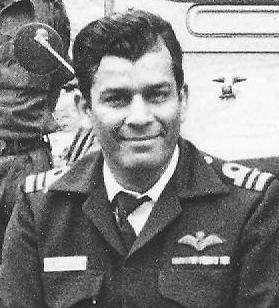
Late Captain Ravindra Das Dhir, VrC
While the war-clouds were gathering, INS Vikrant was an ailing ship. One of its four boilers was not functional, with cracks on the surface of its water drums. If the drums were to burst under high pressure, the super-heated steam would engulf the boiler room. The consequences would be disastrous. The other three boilers, too, were operating below par. It was not possible to acquire the replacement components from Great Britain in a timely manner. With these limitations, INS Vikrant was assured a speed of no more than 14 knots, which was insufficient to operate aircrafts or to deal with potentials submarine threats. When there is no ambient wind on the deck to provide critical buoyancy under the wings, aircrafts need over 20 knots of carrier speed for take-off. In any event, there would be no steam to launch the aircrafts. These matters weighed heavily, not only on the minds of Squadron Commanders Lieutenant Commander Gigi Gupta and Lieutenant Commander Ravi Dhir, but also on the minds of the Navy Chief Admiral SM ‘Charles’ Nanda, Fleet Officer Commander-in-Chief of the Eastern Command Vice Admiral Nilakanta Krishnan, and the Commanding Officer of INS Vikrant Captain Swaraj Parkash.
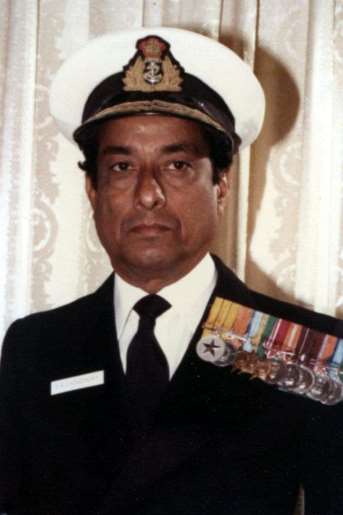
Late Vice Admiral Benoy Roy Chowdhury, AVSM, VrC
INS Vikrant’s Cdr E, Commander Bilu Roy Chowdhury came to the rescue. He, with Senior Engineer Lieutenant Commander B. Bhushan (later Vice Admiral) and an excellent engineering team, confidently implemented hair-raising, high-risk innovations, such as placing steel straps around the cracked boiler, adjusting the safety valves to tolerate higher risks, and leaving the boiler-room unmanned but remotely monitored when the risks were elevated. His exceptional technical skills, combined with his ability to motivate his team, made it possible for the carrier to function effectively. All boilers were operational. INS Vikrant sailed at speed of over 20 knots.[1]
Captain Swaraj Parkash and Lieutenant Commander Santosh Kumar ‘Gigi’ Gupta were each awarded the Maha Vir Chakra; and Lieutenant Commander Ravindra Das Dhir and Commander Benoy Roy Chowdhury were awarded the Vir Chakra. All in all, the crew of INS Vikrant earned two Maha Vir Chakras and twelve Vir Chakras for their gallantry in the War, of which one Maha Vir Chakra and five Vir Chakras went to INAS 300, and six Vir Chakras went to INAS 310, including one each to Lieutenant Commander S. Ramsagar and his crew.When hit, Ramsagar’s Alizeaircraft lost the functionality of its hydraulic system. However,he piloted the aircraft back to the carrier. Anti-aircraft gunfire hit the aircrafts of both, INAS 300 and INAS 310, but all returned to the carrier, without any loss.
The author of this essay, who is the youngest brother of Late Captain Ravi Dhir, VrC, has penned the following tributes to the new avatar of Vikrant, one in Hindi and one in English:
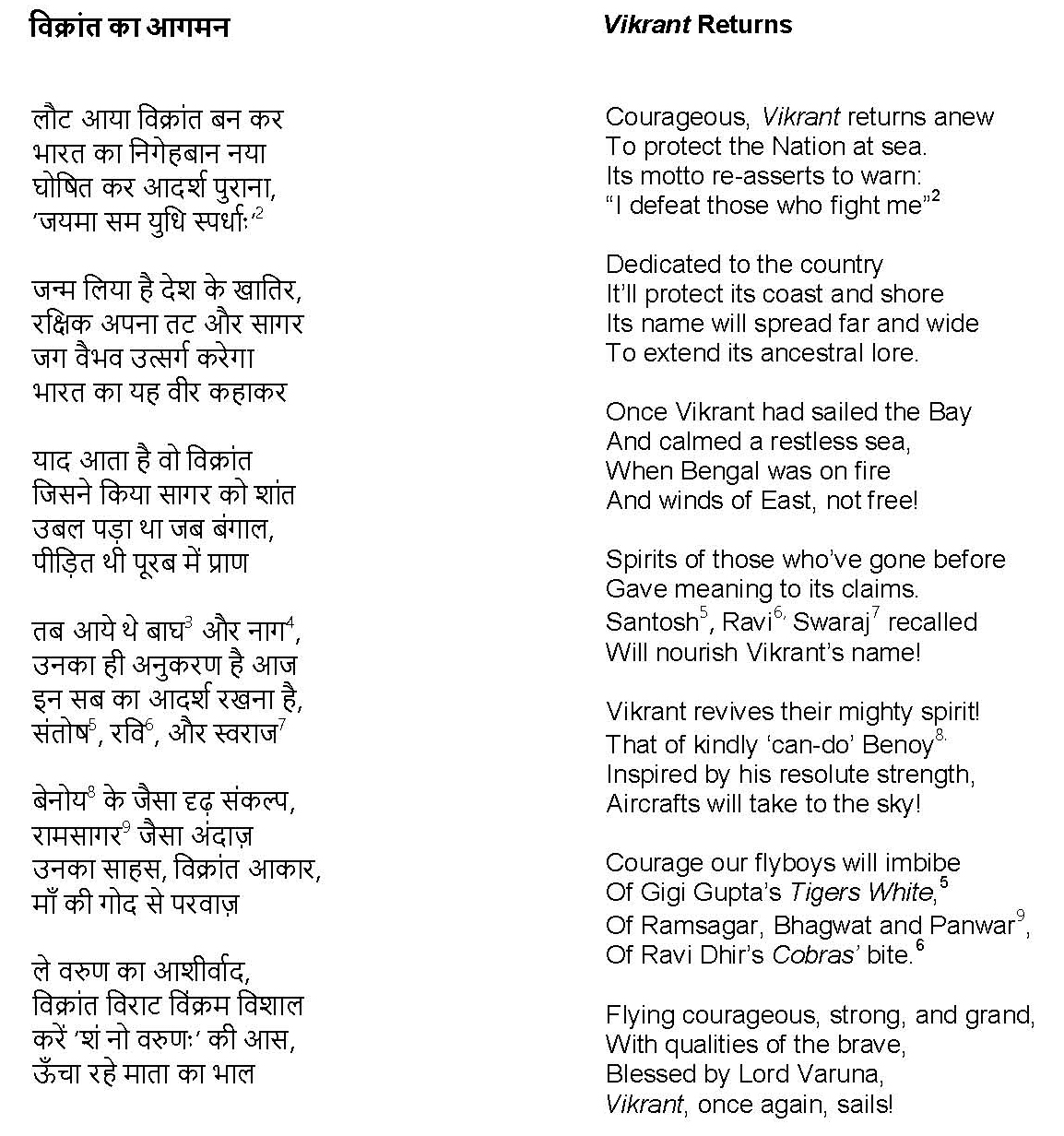 INS Vikrant (R11) was commissioned into the Indian Navy on 4th of March 1961 and decommissioned on 31st January 1997. Many hearts broke when the grand carrier was sold by the Government of India as scrap in 2014. However this famed carrier will now be incarnated as an Indian-made INS Vikrant, with the pennant number of R33. It is presently referred to as Indian Aircraft Carrier – 1, or IAC-1. It underwent sea trials during 4th to 9th August 2021. It has a top speed of around 28 knots and a cruising speed of 18 knots with an endurance of about 7,500 nautical miles. It is 262 metres long, 62 metres wide and 59 metres high. The carrier is expected to be commissioned into the Indian Navy in 2022 under the command of Commodore Vidhyadhar Harke. Naval historian Commodore SB Kesnur states, “Unlike the earlier incarnation, this Vikrant will be a proud “Made in India’ product showcasing our indigenous prowess and our mettle in shipbuilding, assiduously built over the years. However, the traditions that this ship will imbibe will be from its predecessor and her gallant crew – people like Swaraj Parkash, Gigi Gupta (both MVC) and Ravi Dhir and Bilu Chowdhury (both VrC) and several other magnificent men who flew from its deck or toiled below decks to show the world and our countrymen the difference that the Aircraft Carrier makes to the outcome of war.”[1]
INS Vikrant (R11) was commissioned into the Indian Navy on 4th of March 1961 and decommissioned on 31st January 1997. Many hearts broke when the grand carrier was sold by the Government of India as scrap in 2014. However this famed carrier will now be incarnated as an Indian-made INS Vikrant, with the pennant number of R33. It is presently referred to as Indian Aircraft Carrier – 1, or IAC-1. It underwent sea trials during 4th to 9th August 2021. It has a top speed of around 28 knots and a cruising speed of 18 knots with an endurance of about 7,500 nautical miles. It is 262 metres long, 62 metres wide and 59 metres high. The carrier is expected to be commissioned into the Indian Navy in 2022 under the command of Commodore Vidhyadhar Harke. Naval historian Commodore SB Kesnur states, “Unlike the earlier incarnation, this Vikrant will be a proud “Made in India’ product showcasing our indigenous prowess and our mettle in shipbuilding, assiduously built over the years. However, the traditions that this ship will imbibe will be from its predecessor and her gallant crew – people like Swaraj Parkash, Gigi Gupta (both MVC) and Ravi Dhir and Bilu Chowdhury (both VrC) and several other magnificent men who flew from its deck or toiled below decks to show the world and our countrymen the difference that the Aircraft Carrier makes to the outcome of war.”[1]
————————-
[1]Kesnur, Cmde Srikant B. (2020, April 5). Remembering Benoy Roy Chowdhury. Retrieved August 20, 2021, from www.cudaybhaskar.com: www.cudaybhaskar.com/posts/remembering-benoy-roy-chowdhury
[2]The motto of the ship is “Jayema Saṁ Yudhi Spr̥dhaḥ”, which is taken from the Rigveda, and means “I defeat those who fight against me”. The full quotations is as follows: “Indra tvōtāsa ā vayaṁ vajaṁghanā dadīmahi l Jayema saṁ yudhi sprdhah”. Translated: Aided by thee, the thunder-armed Indra, may we left up the bolt, and conquer all our foes in fight. – Rigveda 1.08.03.
[3]बाघ refers to the White Tigers of INAS 300.
[4]नाग refers to the Cobras of INAS 310.
[5]संतोष or Santosh is the first name of Rear Admiral S.K. ‘Gigi’ Gupta, MVC, NM (Retd). As a Lieutenant Commander, he was the Squadron Commander of INAS 300 during the 1971 Indo-Pak War.
[6]रवि or Ravi refers to Late Captain R.D. Dhir, VrC, who passed away unexpectedly in 1979, while serving as Captain of INS Deepak. As a Lieutenant Commander, he was the Squadron Commander of INAS 310 during the 1971 Indo-Pak War.
[7]स्वराज or Swaraj is the first name of Vice Admiral S. Parkash, PVSM, MVC, AVSM (Retd). As a Captain, he was the Commander Officer of INS Vikrant during the 1971 Indo-Pak War.
[8]बेनोय refers to Late Vice Admiral Benoy Roy Chowdhury, AVSM, VrC. As a Commander, he was Cdr E of INS Vikrant (R11) during the 1971 Indo-Pak War.
[9]रामसागर or Ramsagar refers to Rear Admiral Sourirajulu Ramsagar, AVSM, VrC, NM, who returned to the carrieralong with his crew members Bhagwat and Panwar, after losing his Alize aircraft’s hydraulic system to anti-aircraft gunfire. He was the Senior Pilot of INAS 310 during the 1971 Indo-Pak War.




